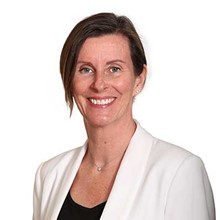At entry level everyone holds their own in the insurance industry – but at higher levels, diversity falls away
You can’t put a woman in a C-Suite role, if she doesn’t exist in senior management. And you can’t make a woman a senior manager if she doesn’t exist in middle management.
In an age where society and industry are supported by insurance and banking, it’s of vital importance that those responsible for analysing, manufacturing, and managing financial products reflect the diversity of the communities they serve.
The presence of women as decision-makers is essential to reflect a range of perspectives and avoid the risk of bias in the impact of these products.
Before I joined QBE Re in Bermuda, the operation was one person, writing a very modest book. My role to build out the branch and business included building diversity as part of that growth.
I’ve been in the insurance industry for 40 years and when I started, there were no female role models, mentors or even underwriters. I was something of an outsider, so I know what it feels like to be different, trying to prove that you are just as capable as people who look different to you or think differently to you.
One of the things we must focus on is creating a pipeline of diverse talent to move up the career ladder. We cannot promote to the top if that candidate doesn’t already exist at a middle and lower level. Change should be embedded as part of initial hiring at a junior level and employers should always ask to see a diverse group of candidates for every open position.
But we need to do this as an industry, not a company.
If only a small number of companies commit to diversity at every level, any organisations that haven’t invested early on will look to poach senior candidates from elsewhere when they need them. With only a small female talent pool at senior level, some employers will have to miss out.
This is where diversity networks and committees can come into their own. I’m part of the Women in Reinsurance group, the Association for Corporate Racial Equity, and I sit on the diversity and inclusion committee for the Association of Bermuda International Companies (ABIC). All these groups are pushing our community to focus on developing a robust pipeline.
We have some good data showing that entry level positions are taking a diverse range of candidates; white women are doing very well winning C-Suite or senior management roles, but there is more we can do in supporting black women into top tier positions.
There’s a lot of information available; some feedback might be anecdotal, and some is official data, but both indicate that having diversity at all levels within an organisation – including at board level – leads to better financial outcomes for a company. One of the upcoming challenges will be to broaden the scope of data that we pull and to widen the kind of factors that are considered including sex, age, ethnicity, neurodiversity, economic and social background, culture, and education.
As an industry, we need to pay attention to the data and focus more energy and funding to mentoring, welcoming young people in to see what insurance is all about, offering internships and developing skill sets across all demographics.Building diversity doesn’t always come without pain. The easiest option for a board is to sit back and let everybody agree with each other, patting each other on the back. Including somebody who thinks differently and who may challenge the status quo can feel uncomfortable, but the benefits far outweigh the teething pain and result in improved company outcomes and employee wellbeing.
The people we work with, how we engage with those people, and whether we are willing to listen to different perspectives will be key to continued success in our line of business.
This article first appeared on 12 September 2023 in The Insurer


